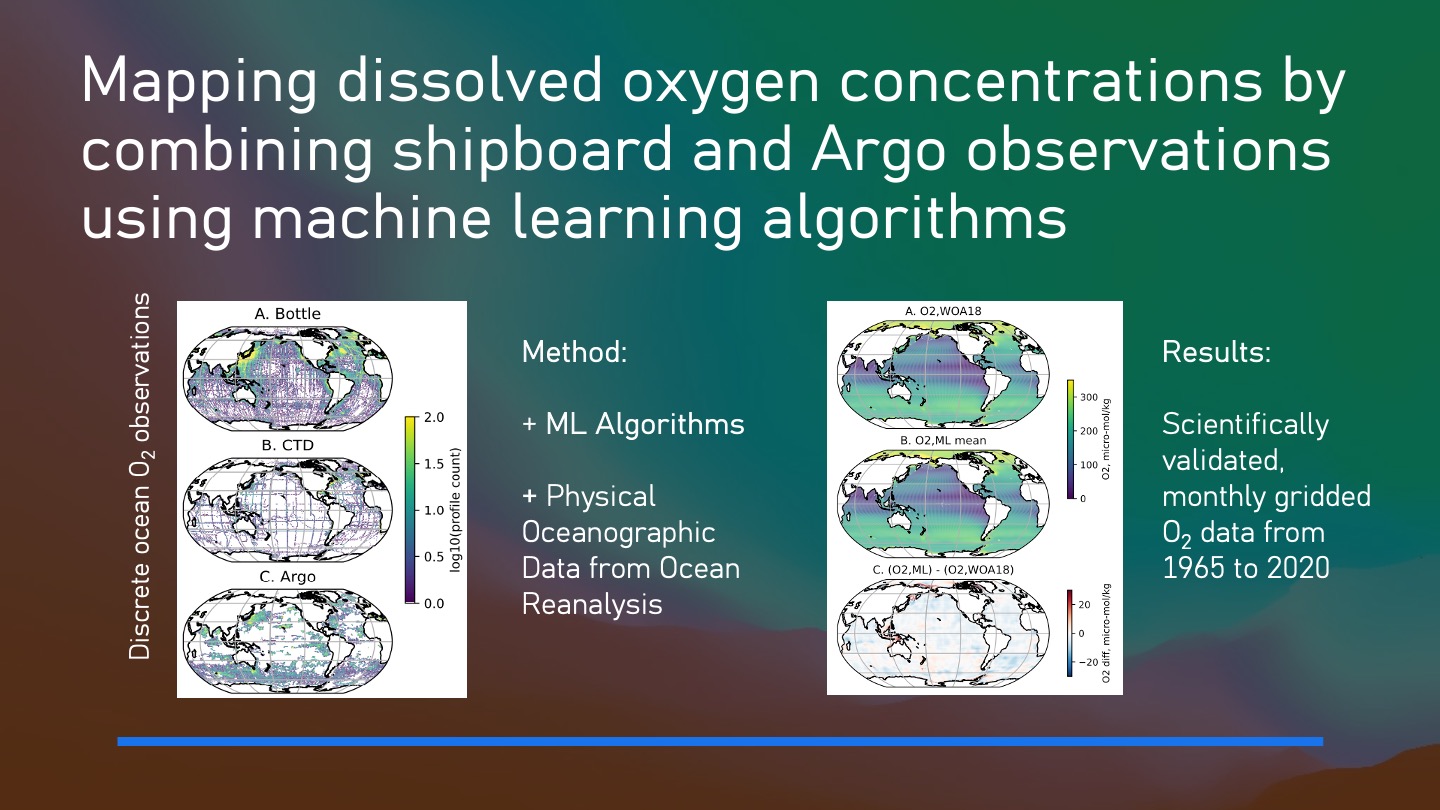
Ito et al., (2024), J. Geophys. Res. Machine Learning and Comp.
Mapping dissolved oxygen concentrations by combining shipnboard and Argo observations using machine learning algorithms (full image)
We are interested in the application of machine learning to the cycling of nutrients, carbon and oxygen in marine environment.

Mapping dissolved oxygen concentrations by combining shipnboard and Argo observations using machine learning algorithms (full image)
More than 95% of carbon atom in the surface of the Earth is dissolved in the ocean, and the carbon is dynamically moving through the air-sea interfaces. Our research aims to better understand the transport and storage of carbon within the ocean through circulation and biological processes.
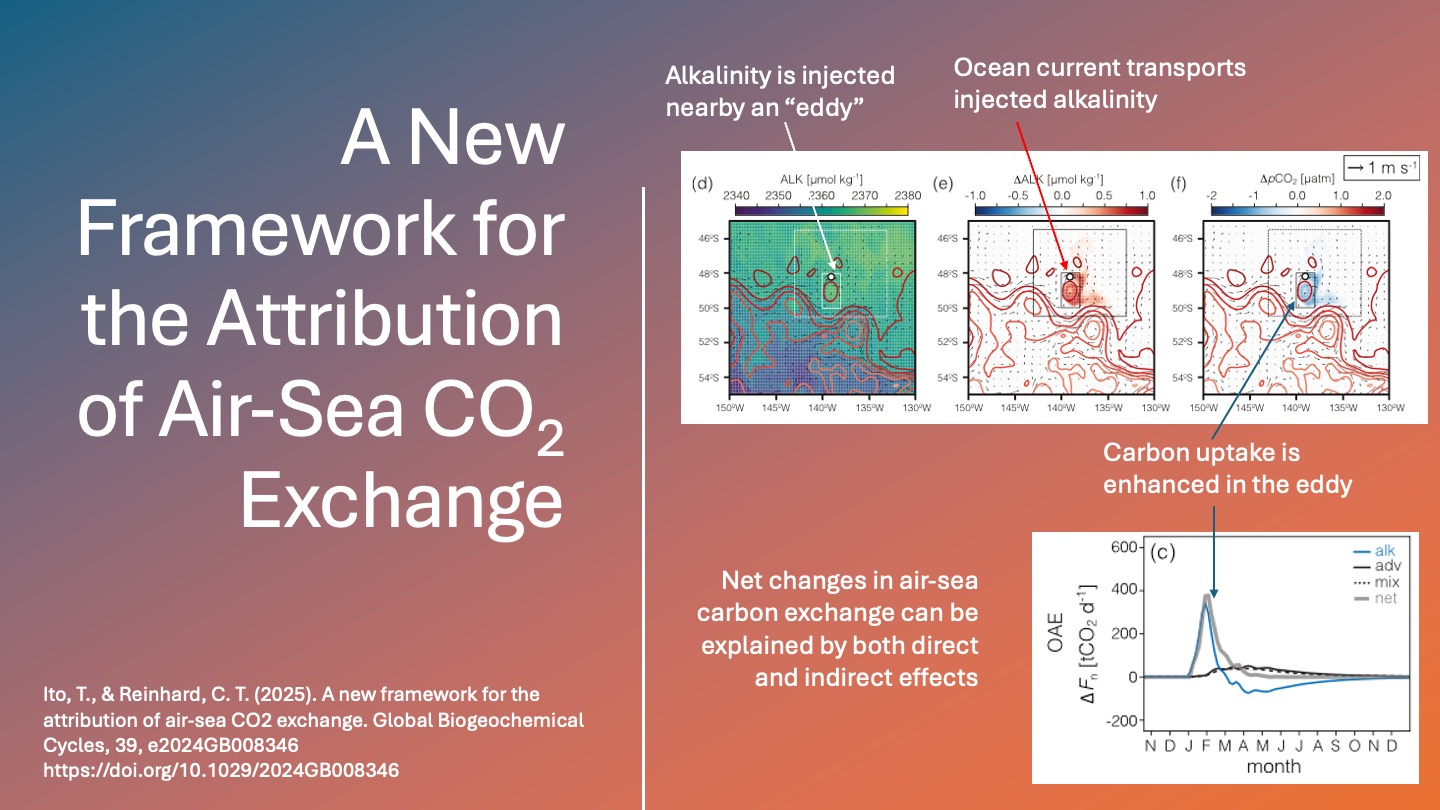
A New Theory to Explain Air-Sea Exchange of CO2 (full image)
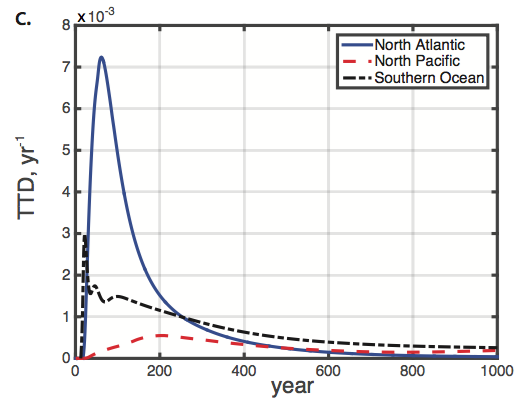
The ECCO-JPL circulation provides overall reliable estimates of the water age and the upper ocean ventilation rates suitable for biogeochemical studies.
This study highlights the crucial role of ocean circulation between the subtropical and subpolar regions that sets the pathway of carbon sequestration into the deep sea.
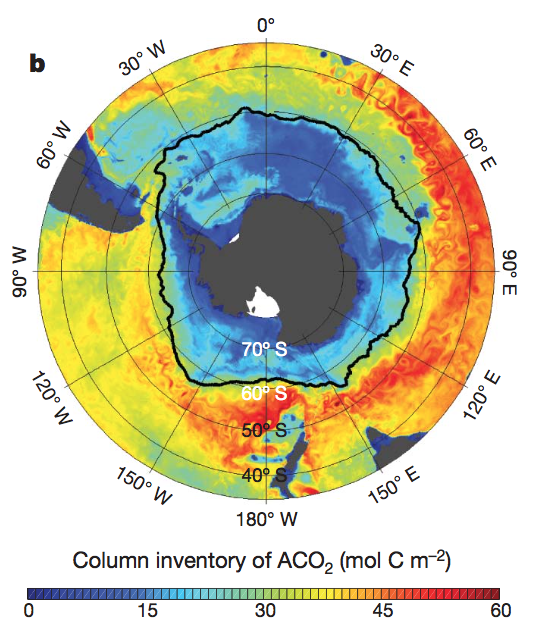
A data-constrianed, eddy-permitting carbon cycle model is used to calculate the uptake and transport of anthropogenic carbon in the Southern Ocean.
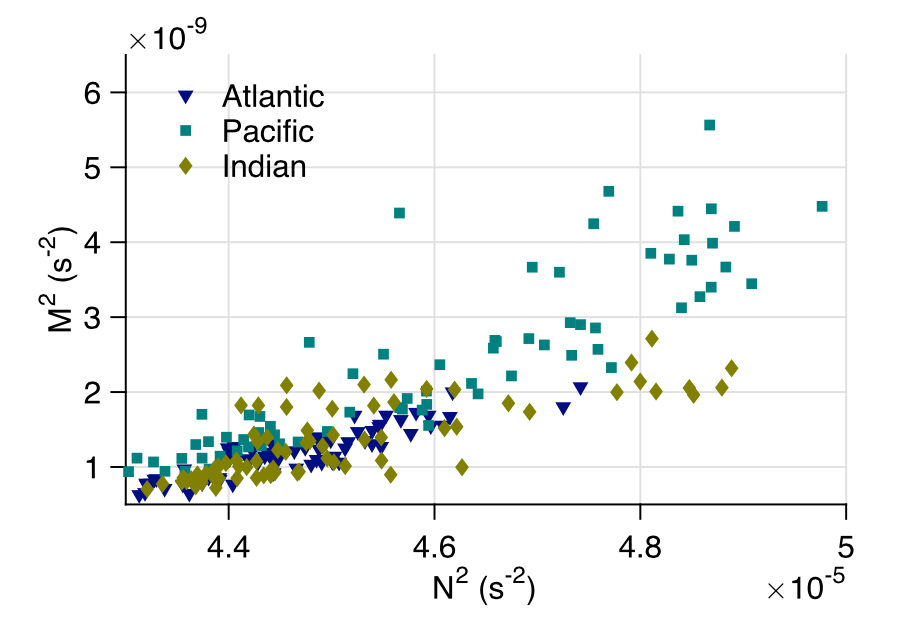
This study demonstrate how the slope of density surfaces in the Southern Ocean is controlled by the turbulent eddies mixing of potential vorticity.
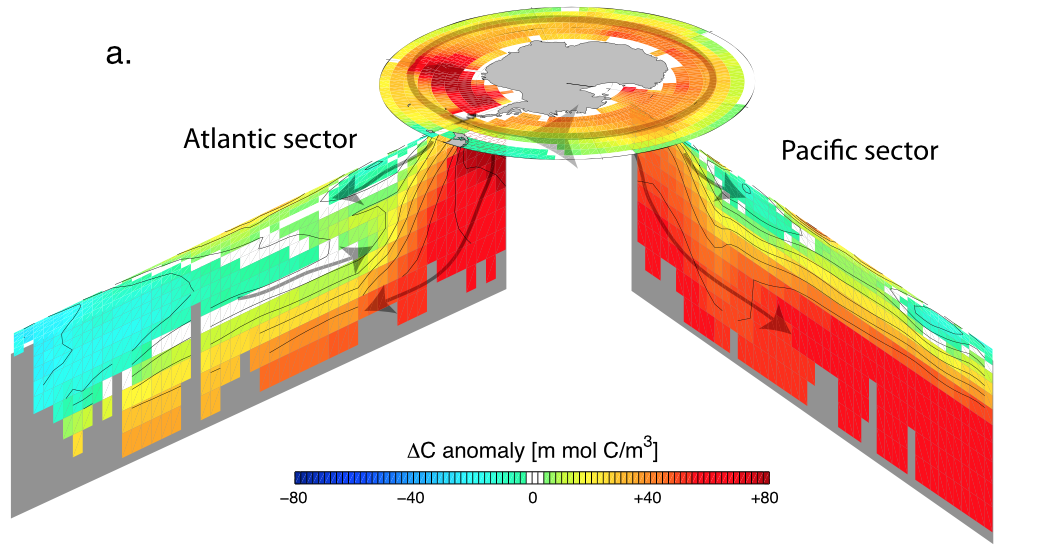
A theory is developed to measure to what extent the incomplete air-sea gas exchange in the Southern Ocean can amplify the effect of biological pump.
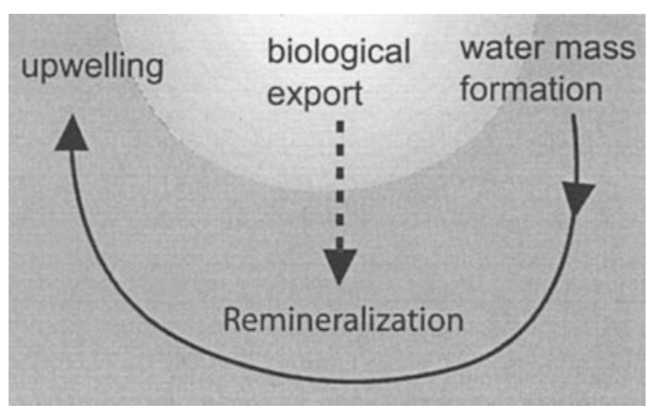
This paper explains the quantitative relationship between the biological activity and atmospheric CO2 using the global mean preformed phosphate as a metric.
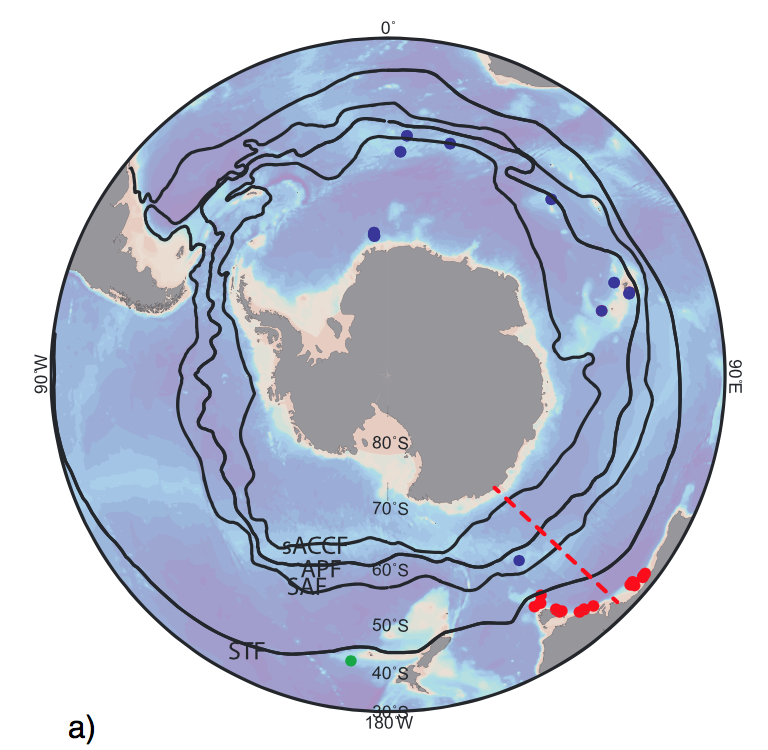
A consistent relationship between the LGM stratification and the circulation intensity has been found from sediment proxies.
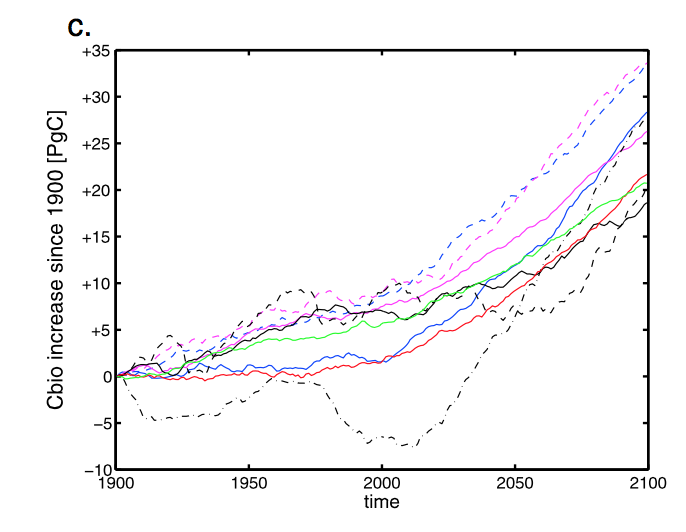
Southern Ocean is projected to retain large amount of carbon in the deep water due to the weakened ventilation in global warming simulations.
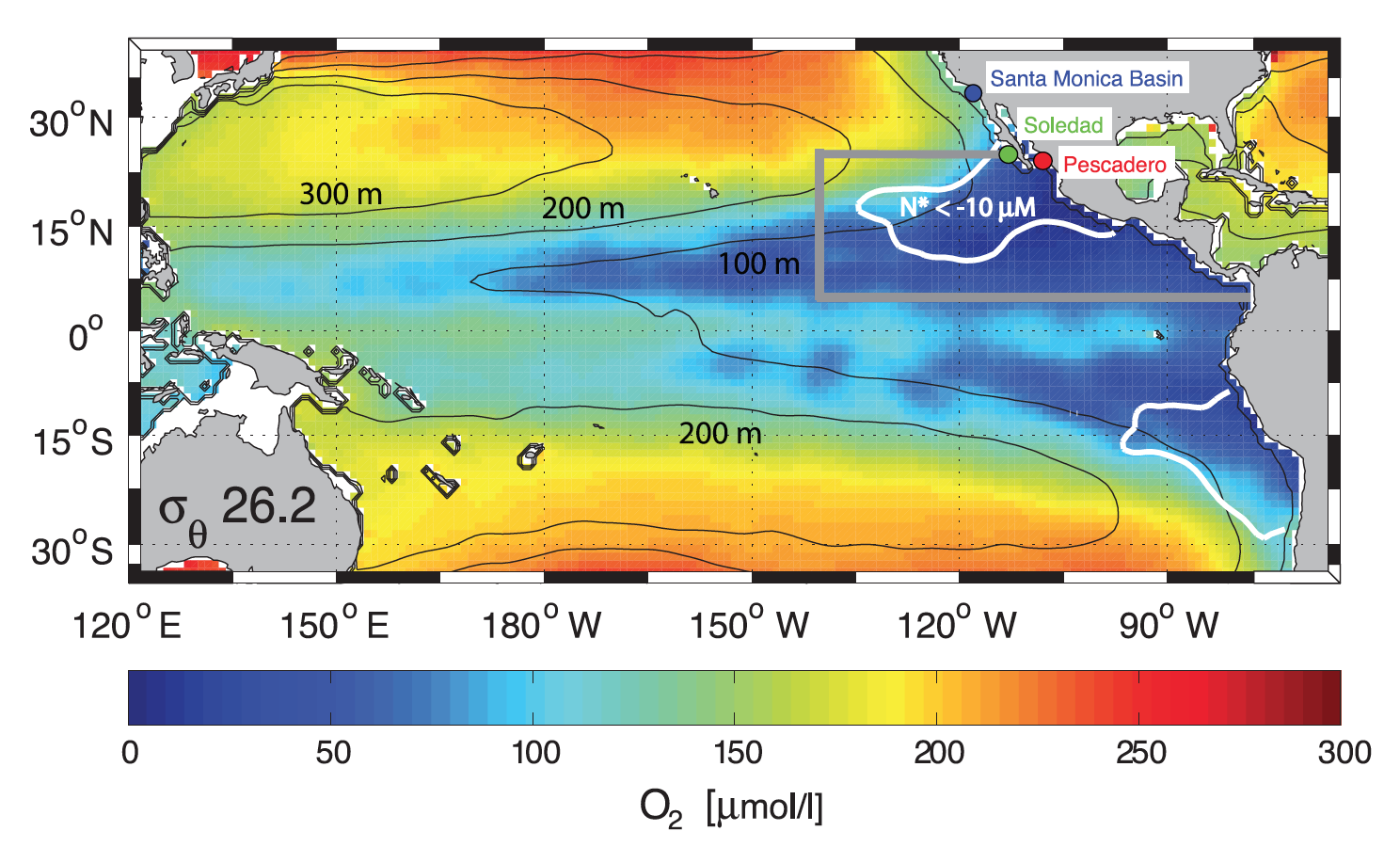
Sediment records show that trade wind controlled the variability of tropical Pacific Oxygen Minimum Zone in the last 150 years.
Our knowledge of ocean deoxygenation is quite limited, due to sparse observations and the fact that oxygen levels are naturally dynamic, characterized by significant interannual to decadal fluctuations.
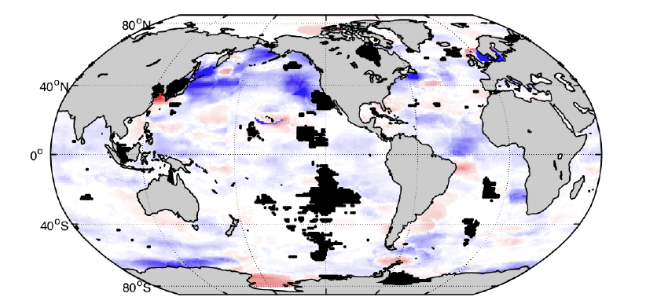
A widespread negative O2 trend is beginning to emerge from the envelope of interannual variability according to historic datasets. [journal] [preprint] [Download Data]
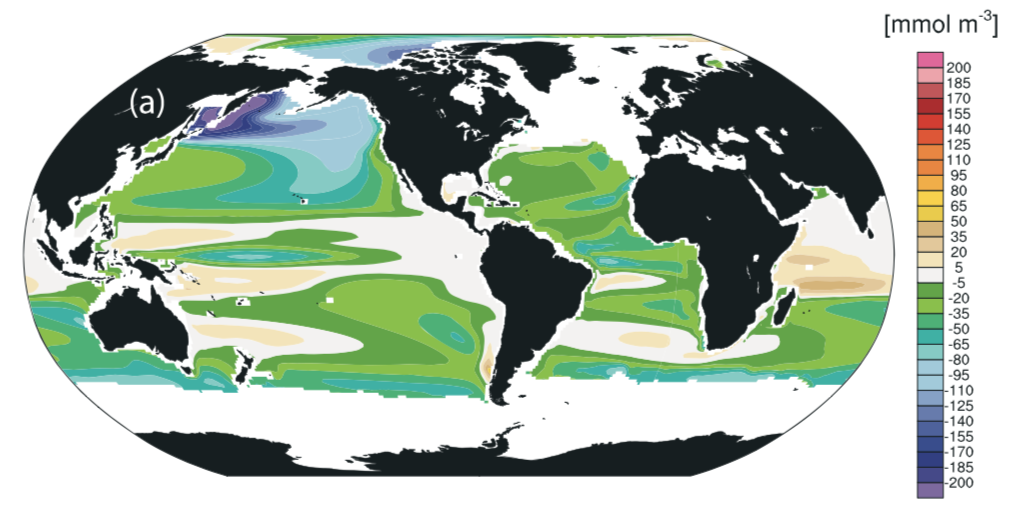
The increasing temperature and stratification is predicted to drive oxygen decline in the seawater – aka Ocean Deoxygention, likely to exhibit widespread anthropogenic ocean deoxygenation by 2030-2040s. [journal] [preprint]
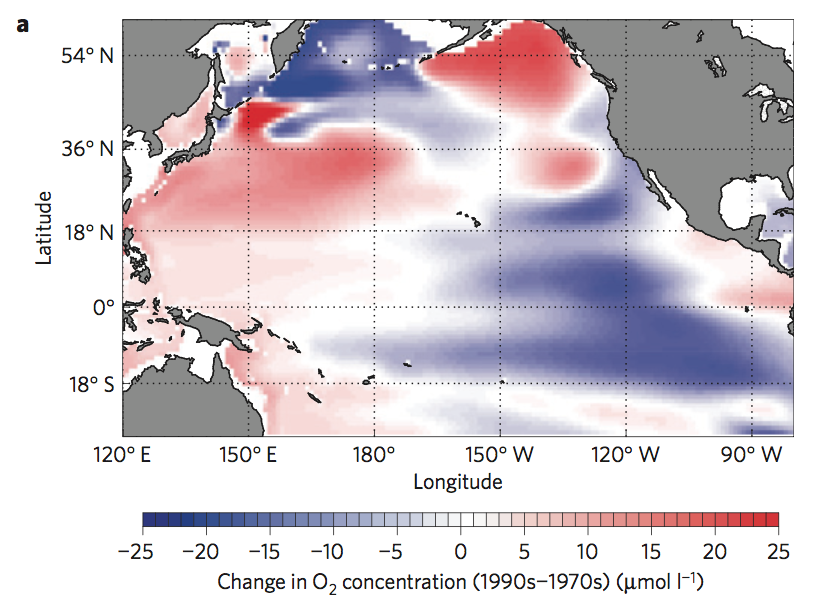
Deposition of polluted aerosol could be partially responsible for the recent expansion of the tropical Pacific Oxygen Minimum Zone. [journal] [preprint]
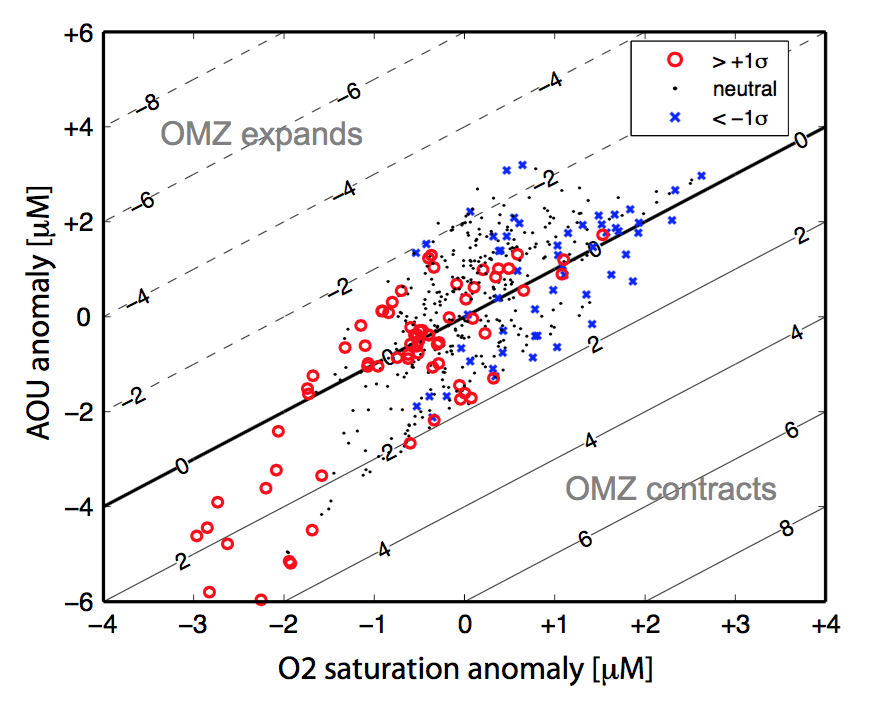
ENSO cycles controls the variability of tropical Pacific Oxygen Minimum Zone on the interannual timescale by modulating heat content, circulation and biological productivity. [journal] [preprint]
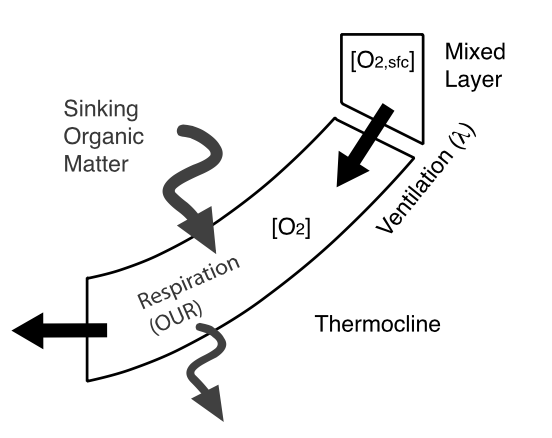
Ocean circulation integrates the variability of physical and biological processes to produce decadal variability of dissolved oxygen in the thermocline. [journal]
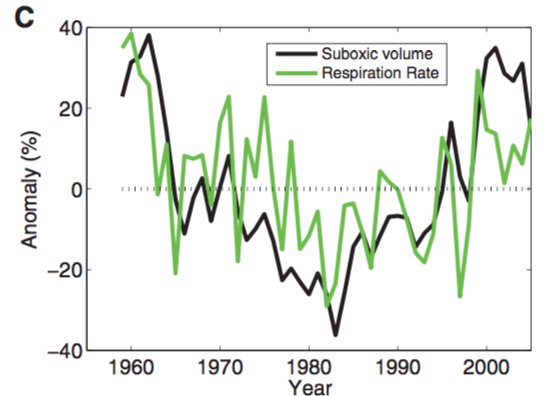
Observed Variability of tropical Oxygen Minimum Zone is reproduced by a computational simulation for the first time. The cause of variability is linked to the depth of the thermocline. [journal]
Is the ecosystem controlled by the environment? Is the environment controlled by the ecosystem? We are interested in the feedbacks between marine ecosystem and the cycling of nutrients, carbon and oxygen in marine environment.
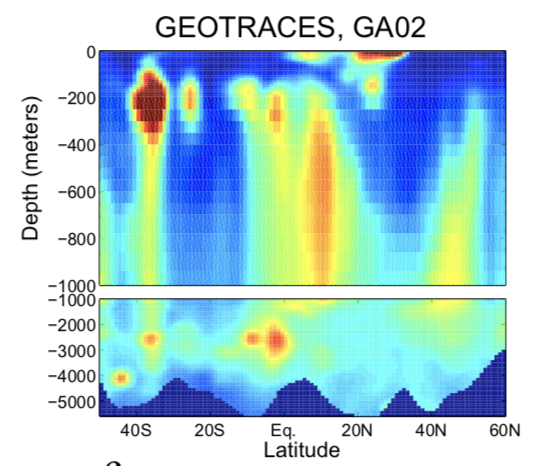
A suite of model simulations are used to explain what controls the distribution of subsurface iron in the global oceans.
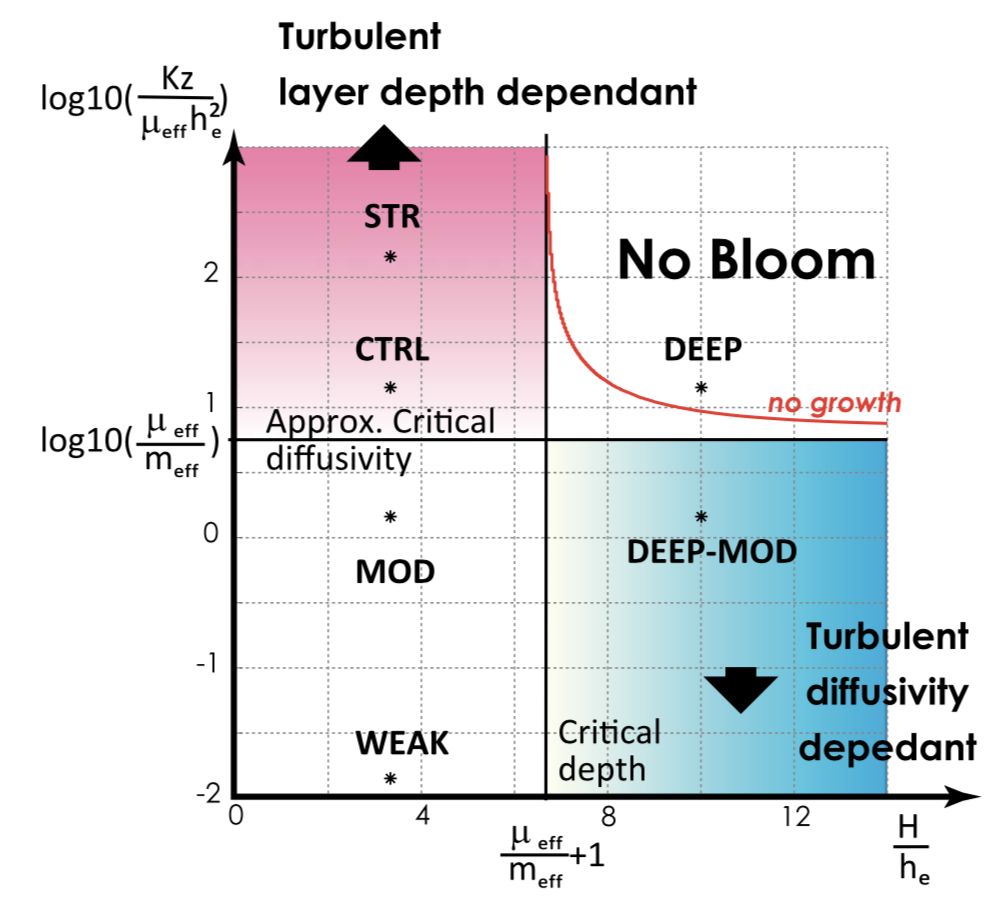
Theories of spring phytoplankton bloom are examined in an unified theoretical framework. (journal)